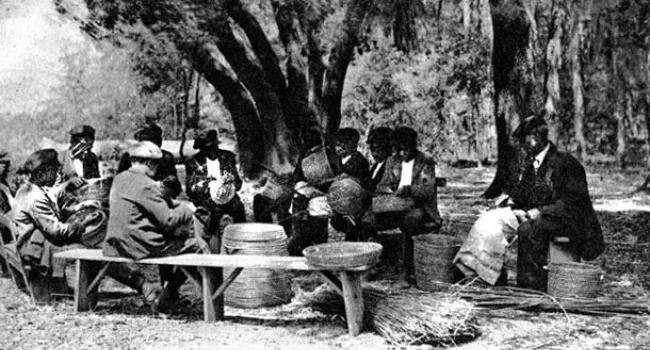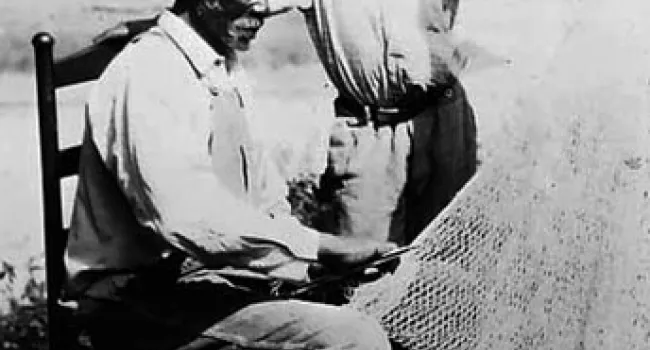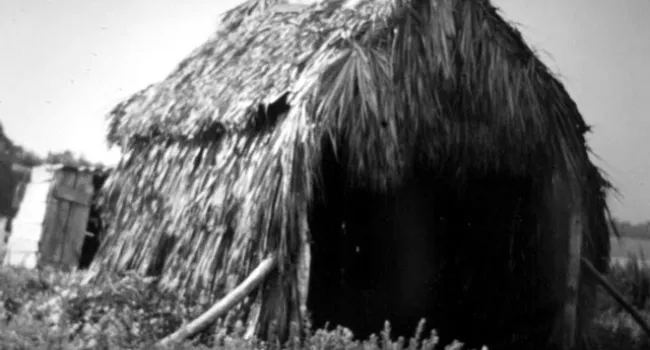
During slavery, although plantation owners attempted to control the lives and activities of their slave labor, a vital community based on African traditions of family and kin networks aided African Americans in their adaptation to, and survival, in the slave system. Though often designed by white masters, the plantation "streets" of the "Negro Quarters" became the focus for the building of those communities. An 1860 photograph of a plantation street during the evening mealtime offers a rare glimpse into the active communal life of the quarter. Photo from a stereograph by S.T. Sander, Charleston.
Courtesy of the South Caroliniana Library.
Standards
- 4.4.CC Identify and evaluate the economic, political, and social changes experienced throughout the Civil War.
- This indicator was designed to encourage inquiry into the continuities and changes of the experiences of marginalized groups such as African Americans, Native Americans and women, as the U.S. expanded westward and grappled with the development of new states.














